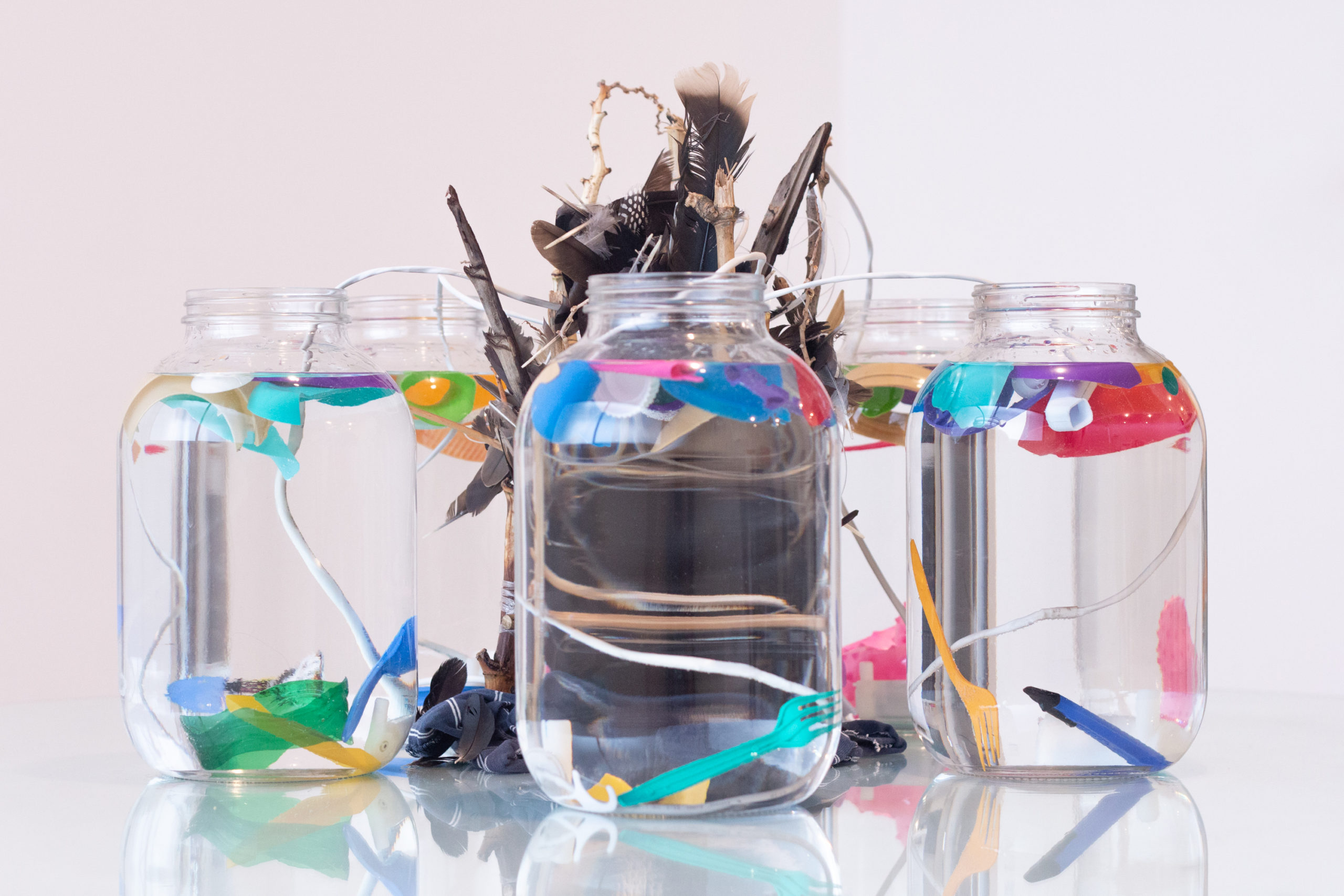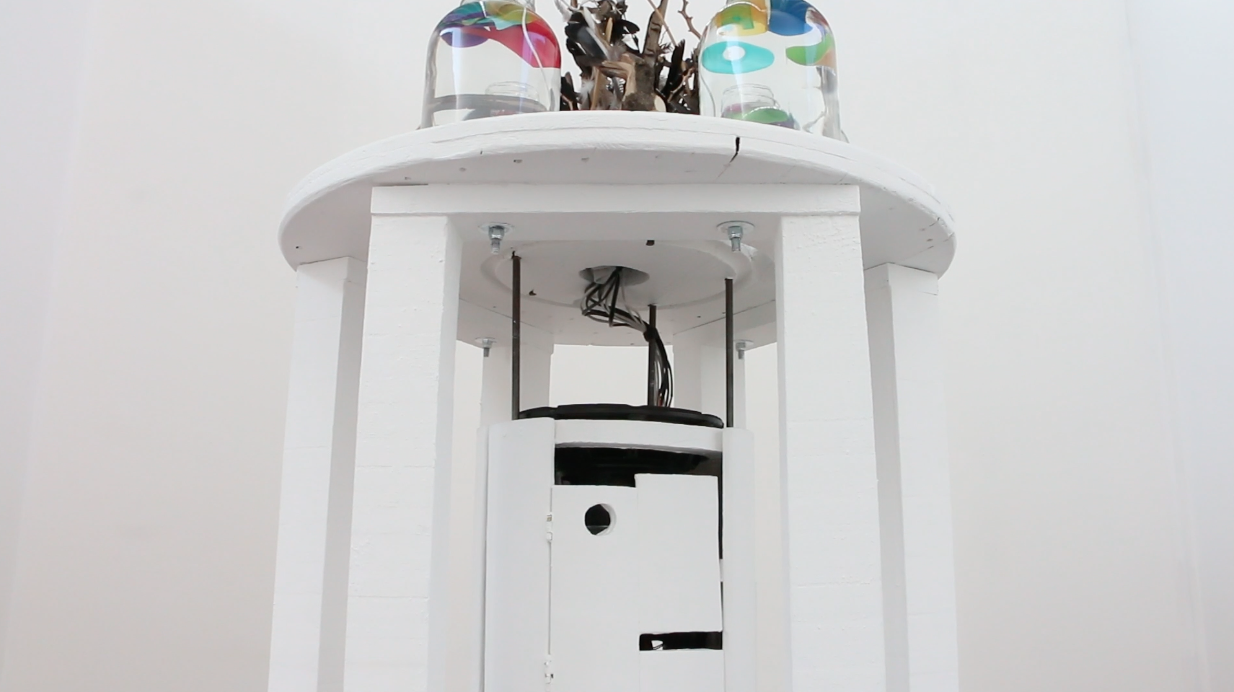
APAIA, 2018
7 tipos de plástico, materia orgánica, agua, electrónica, bocina.
Escultura sonora. 140x90x90 cm
El conjunto de materiales utilizados en esta pieza se conforma por diferentes tipos de polímeros, entre ellos poliéster y poliestireno; principales contaminantes del fondo del océano, así como diferentes tipos de polímeros más propensos a desintegrarse y a absorber toxinas, los cuales son ingeridos por aves, fauna marina y finalmente humanos. Una estructura central compuesta de materia orgánica, plumas de ave, madera, bambú, palmera, hilo de caña de pescar y elementos que impiden el movimiento y el crecimiento natural de la vida marina.
Cada sensor es colocado considerando la refracción de la luz al pasar por los medios aire-vidrio-agua, logrando hacer la lectura de movimiento en la profundidad del agua de los 7 tipos de plástico comúnmente clasificados. A estos datos se les otorgan frecuencias distintas por cada frasco. El sonido difícilmente vuelve a ser el mismo debido a los movimientos variables de los polímeros que se sumergen, flotan y se hunden dentro de cada frasco.
APAIA es una escultura en continua transformación, ésta añade materiales reciclados del lugar en que se presenta, adquiriendo matices de diferentes productos orgánicos e inorgánicos y evidenciando los elementos más utilizados de cada región.
Patrimonio cultural de la Universidad Autónoma del Estado de México.
___
APAIA, 2018
7 types of plastic, organic matter, water, electronics, speaker.
Sound sculpture. 140x90x90 cm
The set of materials used in this piece is made up from different types of polymers, including polyester and polystyrene; main pollutants from the ocean floor, as well as different types of polymers more prone to disintegrate and absorb toxins, which are ingested by birds, marine fauna and finally humans. A central structure made up of organic matter: bird feathers, wood, bamboo, palm, fishing rod line and elements that impede the movement and natural growth of marine life.
Each sensor is placed considering the refraction of light when passing through the air-glass-water media, making possible to read the movement in the depth of the water of the 7 commonly classified types of plastic. These data are given different frequencies for each bottle. The sound is hardly the same again due to the variable movements of the polymers that submerge, float and sink inside each jar.
APAIA is a sculpture in continuous transformation, it adds recycled materials from the place where it is presented, acquiring nuances of different organic and inorganic products and highlighting the most used elements of each region.
Cultural heritage of the Autonomous University of Mexico State.

